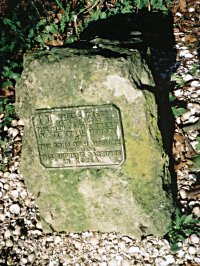



The Parish Church of St George the Martyr, Waterlooville

On the top of Portsdown Hill between Fort Purbrook and Farlington Redoubt lies the Crookhorn Golf Course. At the highest point can be seen a large copse which dominates the sky-
Dead Mans Copse was planted in the form of a shield with the apex pointing towards Portsmouth Air Field and Langstone Harbour which was expected to become a great air terminus for transatlantic flying boats. It can be clearly seen from the air today. The planting was done with great ceremony by the Lord Mayor of Portsmouth with military and Air Force personnel in attendance. Sadly the flying boats never materialised. In 1955 the Men of Trees returned to the site and for reasons unknown erected several small memorial plaques in the copse. One commemorates “The Sons of Hampshire who made the Supreme Sacrifice in Korea”. A second memorial, now illegible, was dedicated to Second Lieutenant Wilfrid Hanbury Grenville Grey 1 K.R.R.C. killed in action at Festubert May 15 1915, aged 19 years. The third plaque commemorates an R.A.F. fighter pilot from Widley called James Kelly. His Spitfire was shot down over Normandy on 4 July 1944 by a F.W.190.
In 1969 Portsmouth City Council acquired the land around the copse from the M.O.D. and developed the present day golf course. No doubt today a few golfers walk into the copse looking for lost golf balls but otherwise few people visit the site and fewer still are aware of its history.
John Symonds
Easter Edition 2014
Dead Mans Copse, Portsdown Hill
